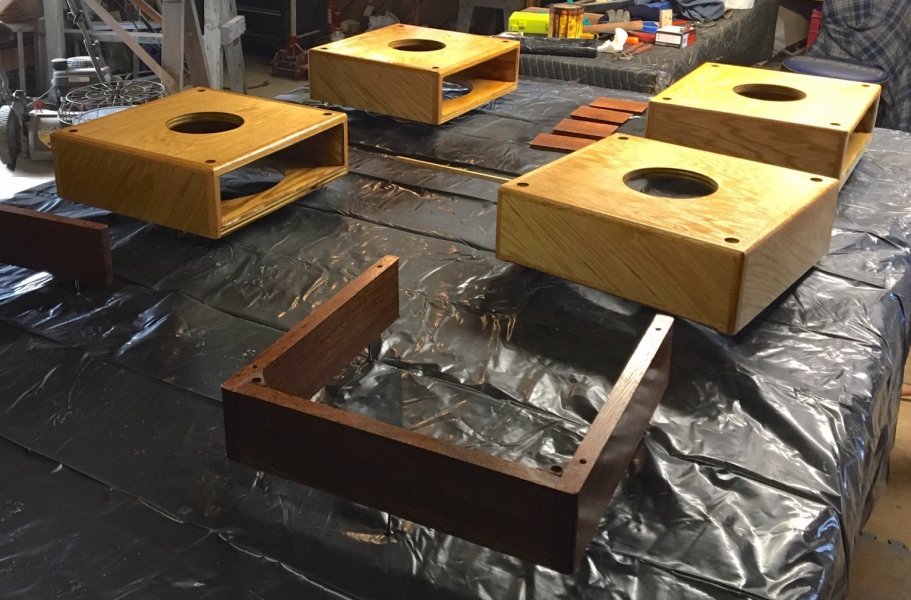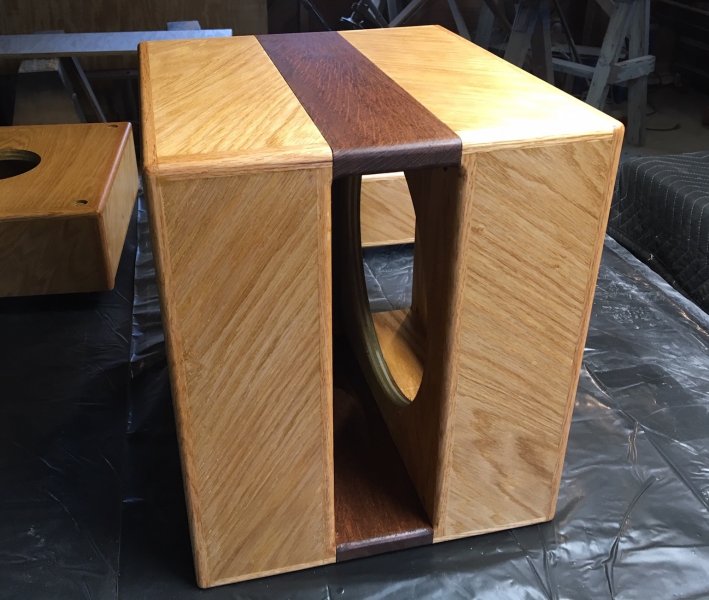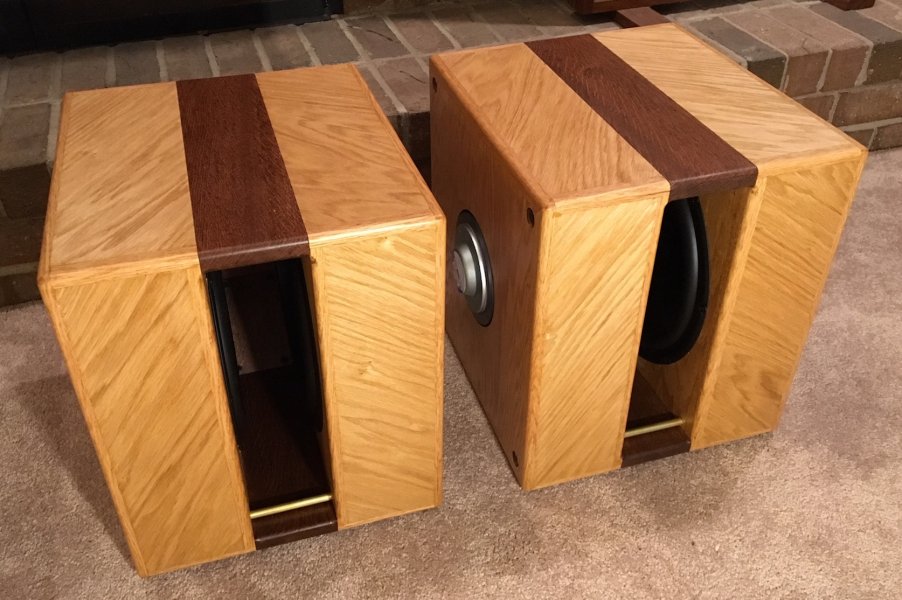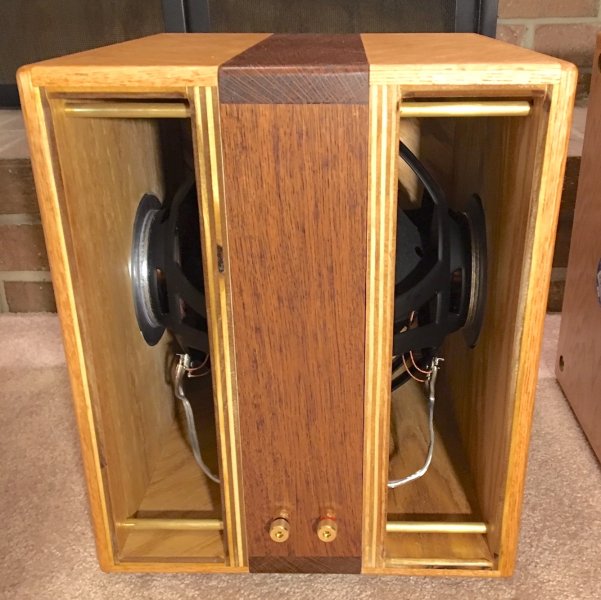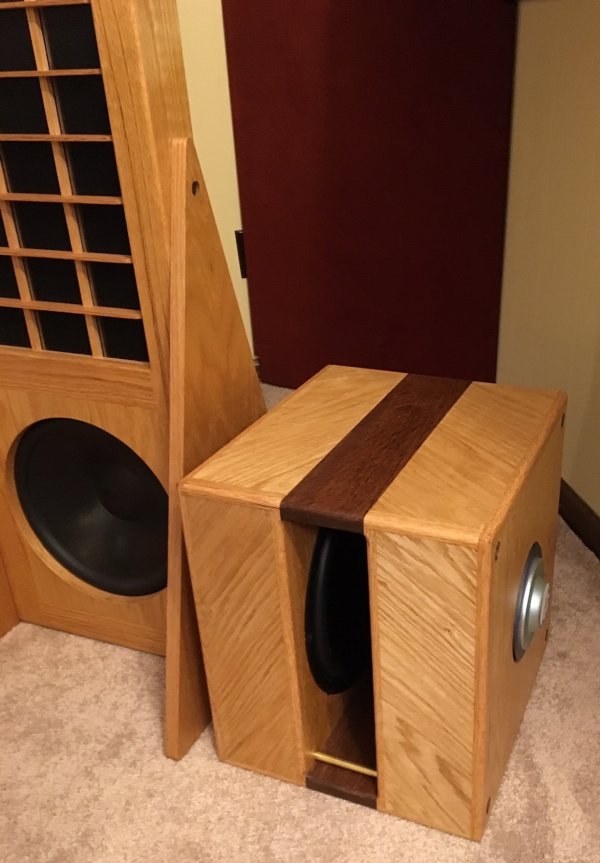Hi All,
I'm building a new pair of Ripol subs for a friend. I've built several pairs previously but these will be a bit smaller/more compact. Height and depth are reduced by 1/2” and width reduced by 1/8". The woofers are the same 12” Peerless SLS’s.
Ripol physics seem counter-intuitive at first but the configuration actually lowers the woofers resonant frequency by as much as 10Hz. In this new pair, the smaller center chamber should slightly extend low-end response and perhaps expand the frontward lobe of the cardioid radiation patten, as a result of the higher chamber pressure. This will be at the expense of slightly reduced efficiency but my friend has amp power to burn so... not a problem.
And I think my friend will like the compact size!
The cabs are 3/4 red oak plywood with oak edge members inserted and rounded over, which looks much better than exposed plywood edges but is a LOT MORE work. The center section is solid brown oak, indexed to the cabs with oak dowel pins. The cabs and center section are held together with all-thread rods and cap nuts.
The cabs will be oil stained with a mixture of 1/3 golden oak to 2/3 natural with a bit of powdered turmeric root added to give a yellowish tint. The brown oak center section will be stained with a red oak, for contrast. After staining; two coats of satin polyurethane will be applied, with a #320 sanding step between coats.
More to come but for now; enjoy the build pics.
Below: Rabbit cut plywood cab pieces self-locate for gluing.
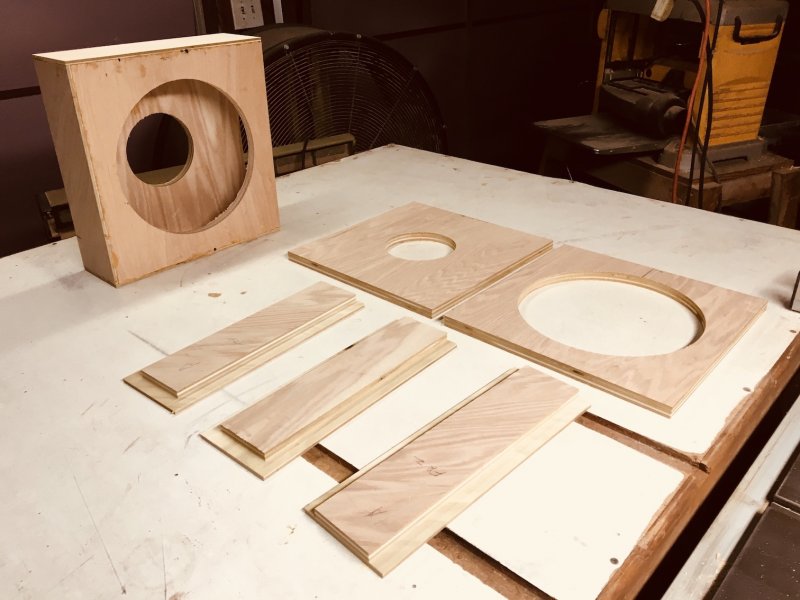
Below: Cab glued and clamped.
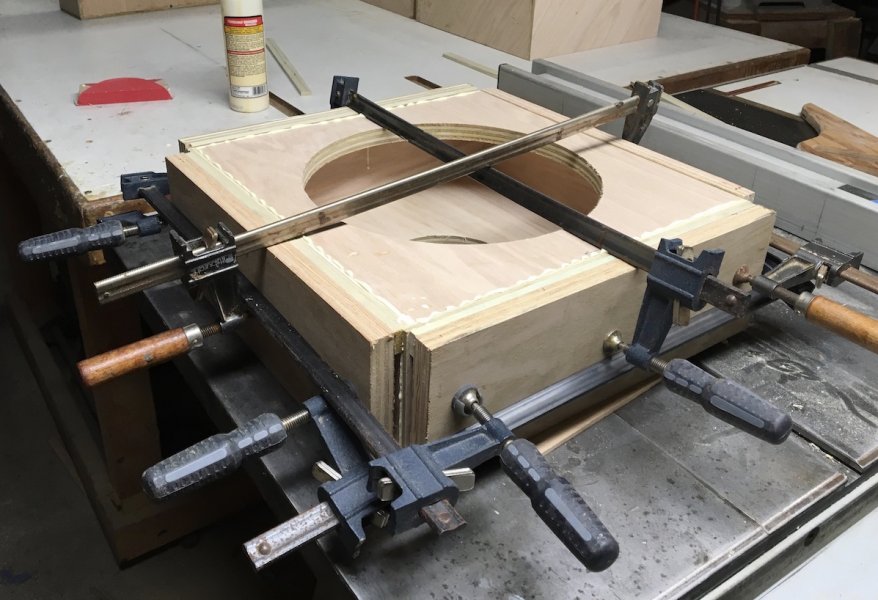
Below: Cab with edges notched on table saw, to accept the oak edge members.
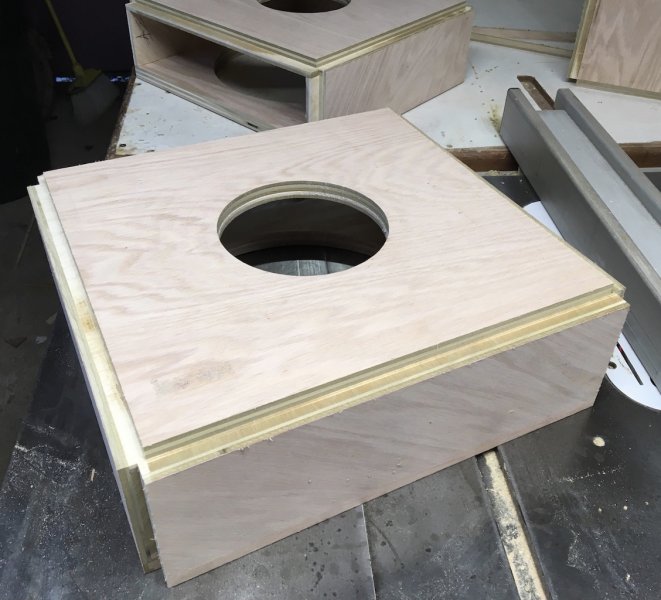
Below: Red oak edge members held in place with painter’s tape while the glue sets.
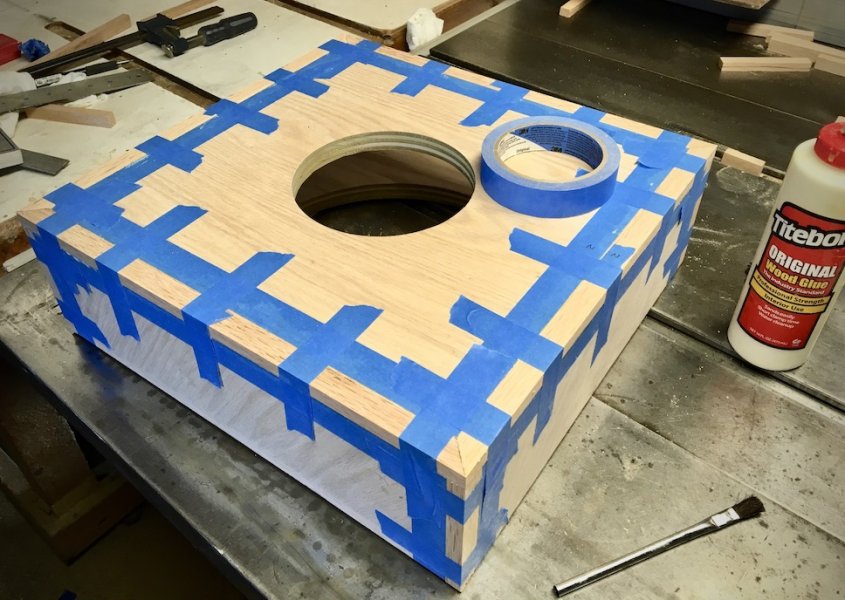
Below: Cab with mitered edge members glued in.
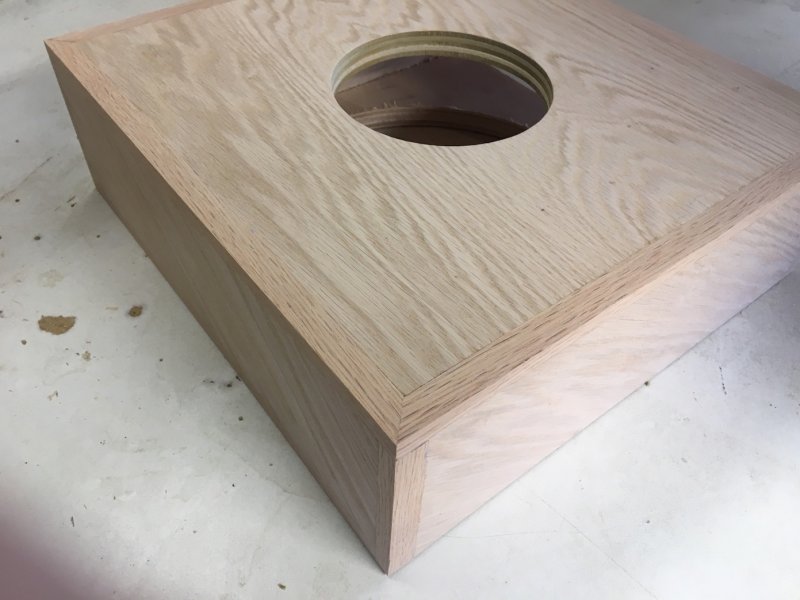
Below: Three-piece assembly (woofer cabs & center section).
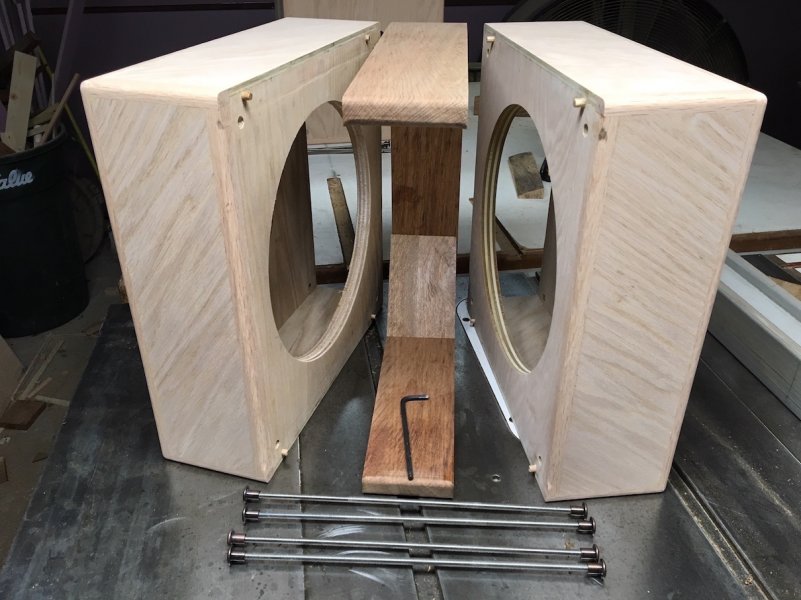
Below: Rearward view of assembled cabs with edges rounded to 3/8” radius on a router table.
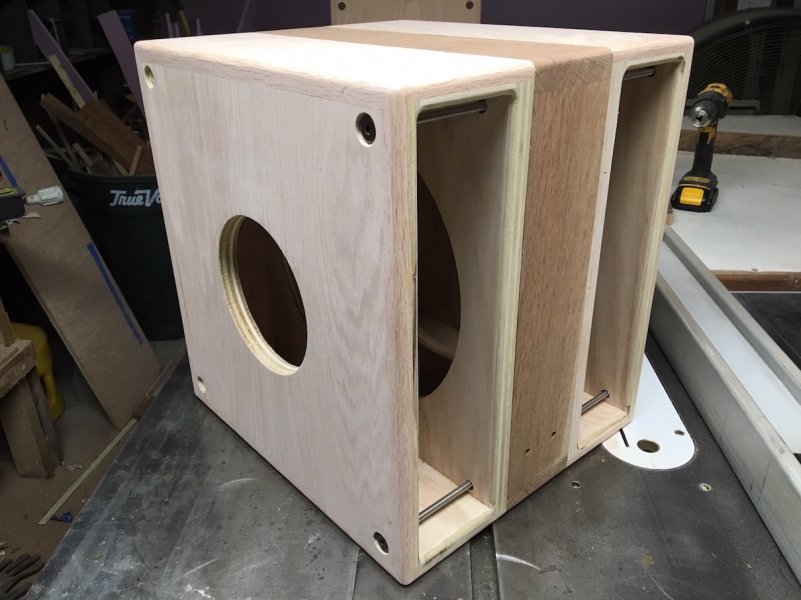
Below: Frontal view with all woodwork completed / ready for stain & satin clear coat.
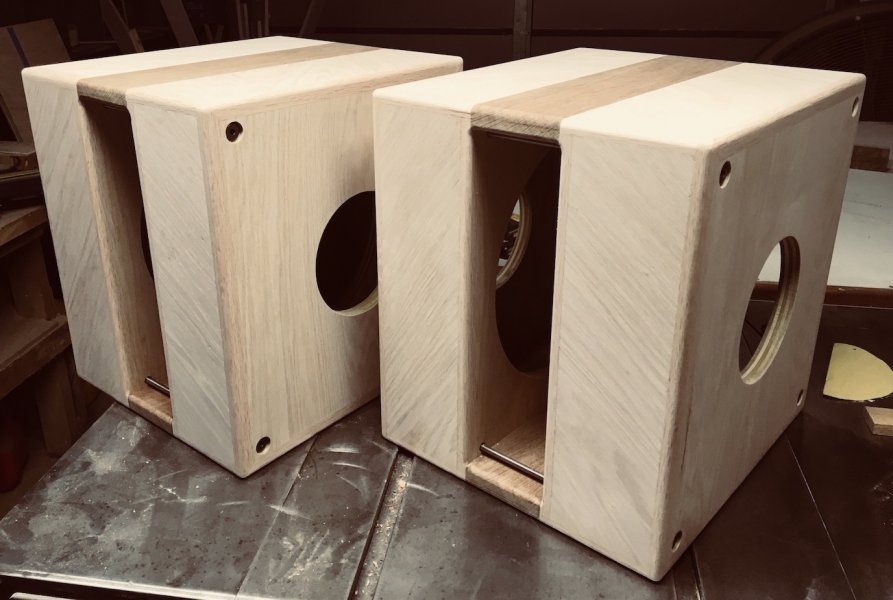
Below: When completed the new subs will look something like one of my personal subs shown here:
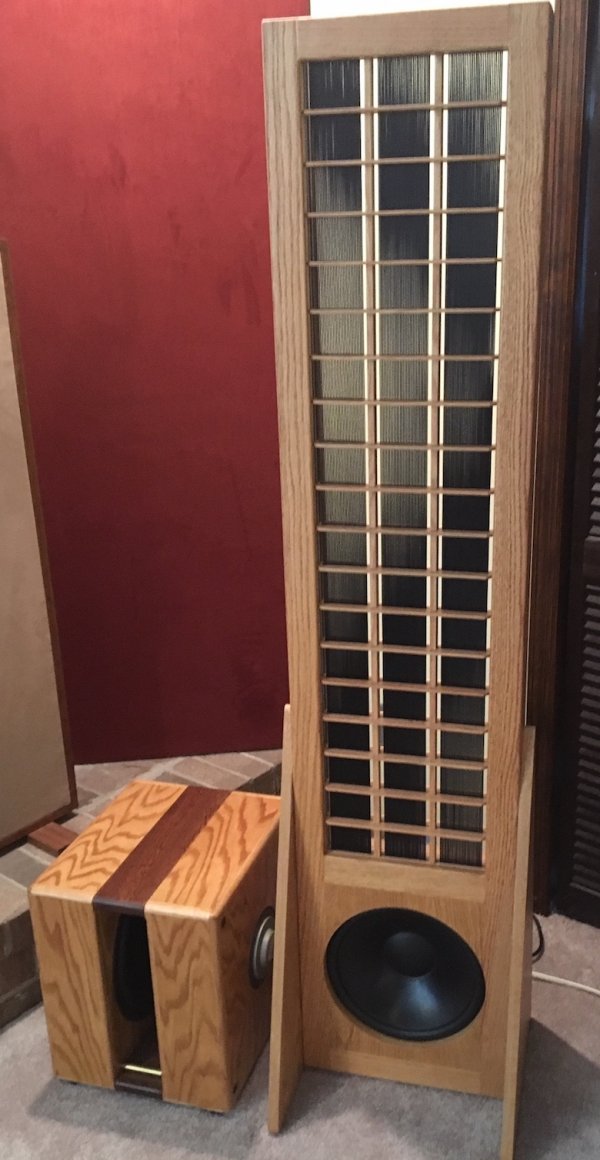
I'm building a new pair of Ripol subs for a friend. I've built several pairs previously but these will be a bit smaller/more compact. Height and depth are reduced by 1/2” and width reduced by 1/8". The woofers are the same 12” Peerless SLS’s.
Ripol physics seem counter-intuitive at first but the configuration actually lowers the woofers resonant frequency by as much as 10Hz. In this new pair, the smaller center chamber should slightly extend low-end response and perhaps expand the frontward lobe of the cardioid radiation patten, as a result of the higher chamber pressure. This will be at the expense of slightly reduced efficiency but my friend has amp power to burn so... not a problem.
And I think my friend will like the compact size!
The cabs are 3/4 red oak plywood with oak edge members inserted and rounded over, which looks much better than exposed plywood edges but is a LOT MORE work. The center section is solid brown oak, indexed to the cabs with oak dowel pins. The cabs and center section are held together with all-thread rods and cap nuts.
The cabs will be oil stained with a mixture of 1/3 golden oak to 2/3 natural with a bit of powdered turmeric root added to give a yellowish tint. The brown oak center section will be stained with a red oak, for contrast. After staining; two coats of satin polyurethane will be applied, with a #320 sanding step between coats.
More to come but for now; enjoy the build pics.
Below: Rabbit cut plywood cab pieces self-locate for gluing.

Below: Cab glued and clamped.

Below: Cab with edges notched on table saw, to accept the oak edge members.

Below: Red oak edge members held in place with painter’s tape while the glue sets.

Below: Cab with mitered edge members glued in.

Below: Three-piece assembly (woofer cabs & center section).

Below: Rearward view of assembled cabs with edges rounded to 3/8” radius on a router table.

Below: Frontal view with all woodwork completed / ready for stain & satin clear coat.

Below: When completed the new subs will look something like one of my personal subs shown here:

Last edited:


